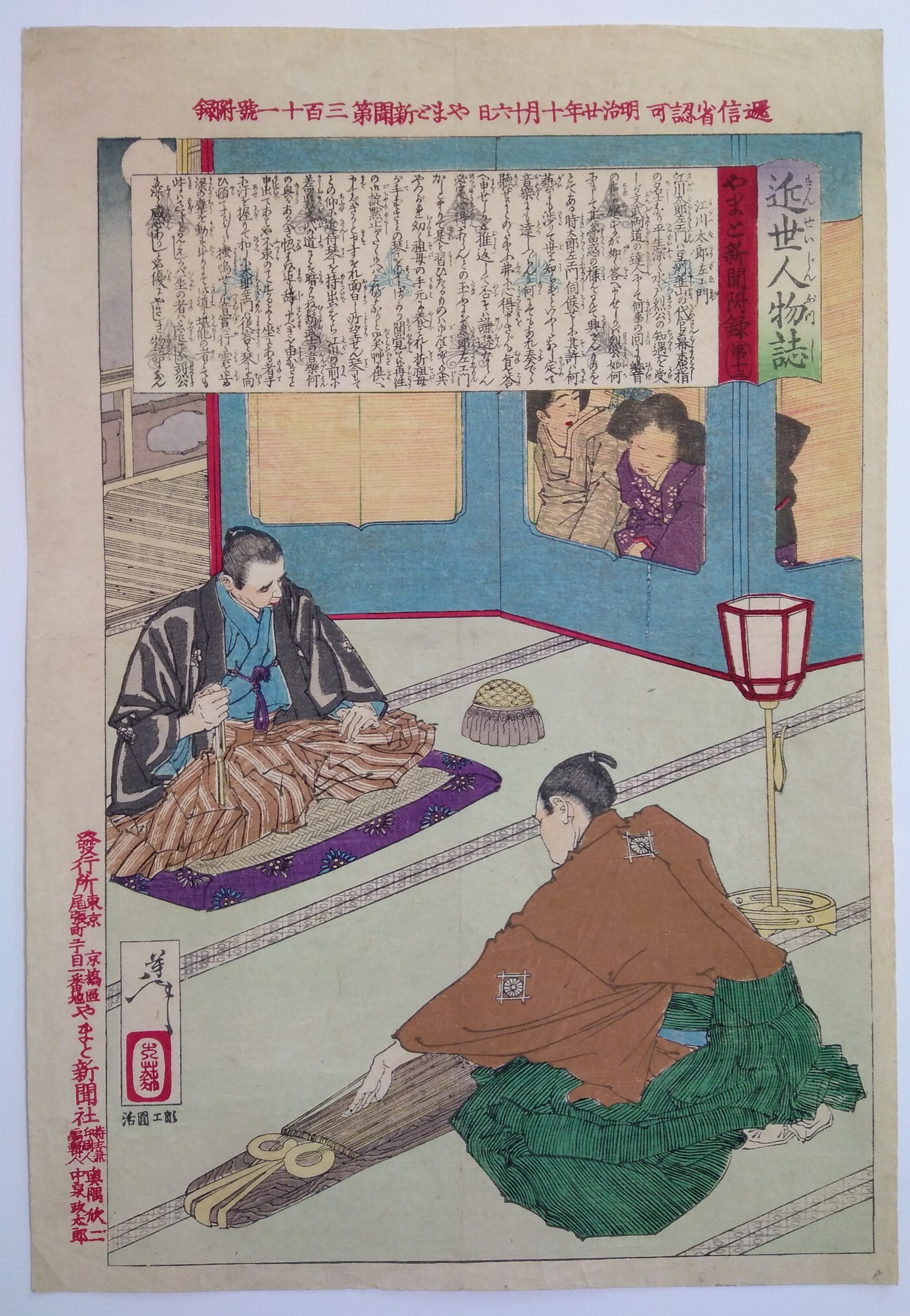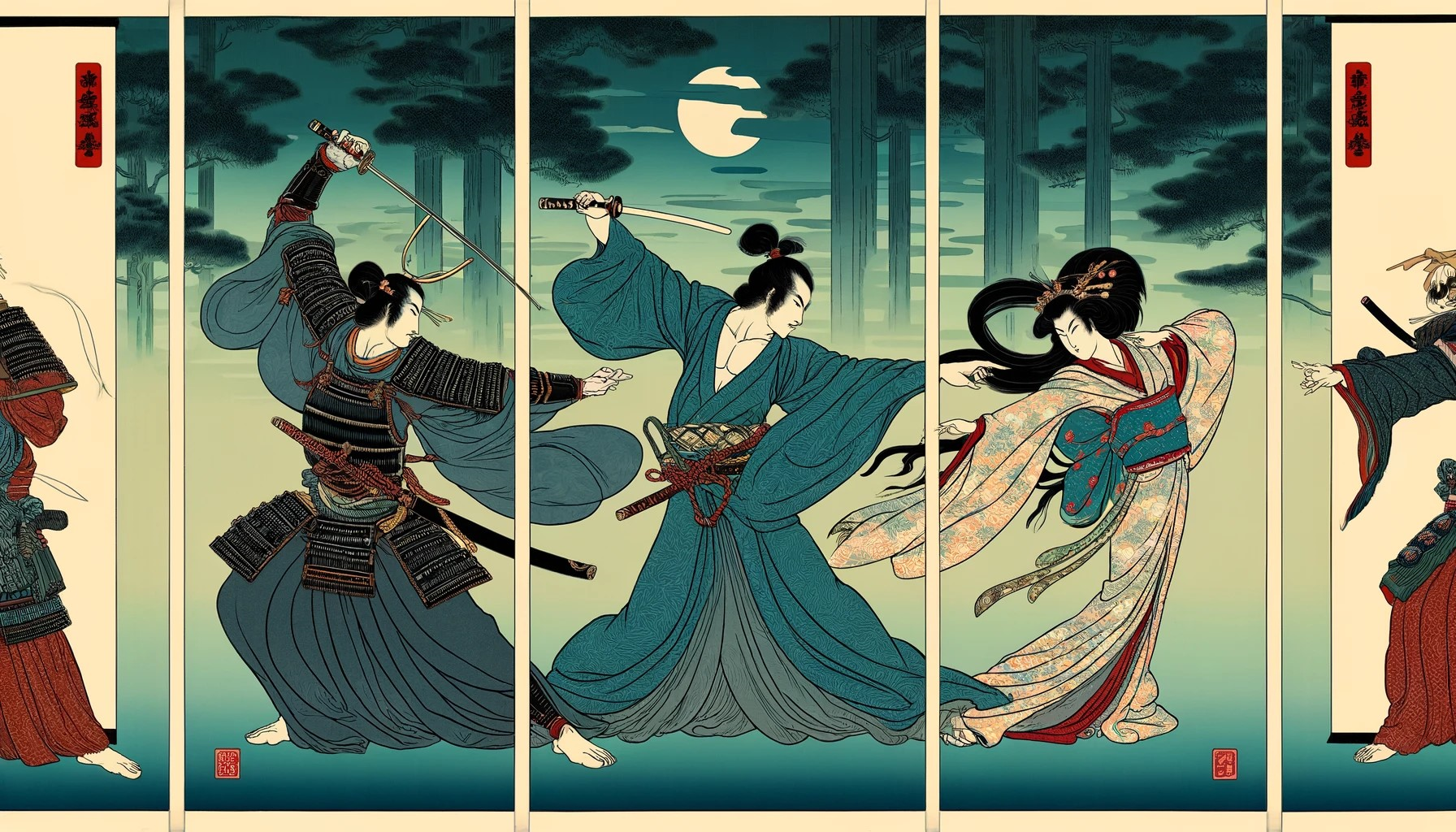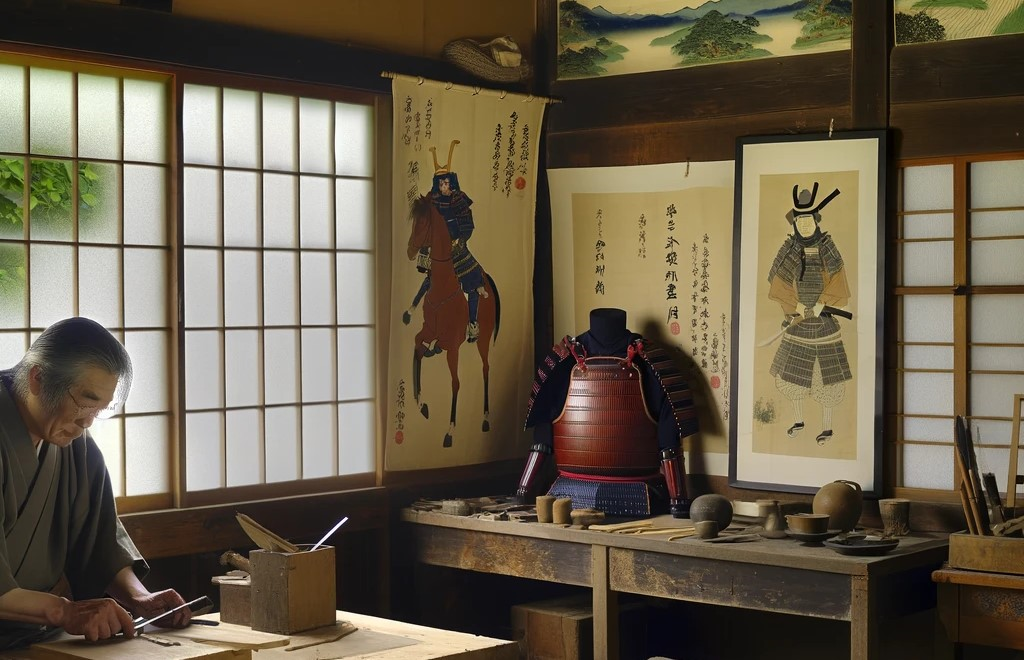Tsukioka Yoshitoshi (1839 ~ 1892)
Taisō Yoshitoshi (大蘇芳年), considered one of the last great masters of ukiyo-e, was born in Edo (now Tōkyō, 東京) and began
his artistic training at the age of eleven as an apprentice to Utagawa Kuniyoshi. He changed his name to Tsukioka Yoshitoshi
(月岡芳年) during his apprenticeship. Yoshitoshi lived through a period of significant change for Japan, spanning the Edo and early Meiji eras.
His career reflected the tensions between tradition and modernization: his early works included series depicting kabuki subjects and historical
scenes, as well as more modern themes influenced by the introduction of synthetic colors and the rapid social and political changes in Japan.
Yoshitoshi is known for his imaginative and powerful style that infused his works with a sensitivity and intensity rarely seen in this period of
ukiyo-e. Among his most famous works are the series "One Hundred Aspects of the Moon" (1885-1892) and "Thirty-six Ghosts and Strange Apparitions" (1889-1892),
which displayed an interest in supernatural themes and Japanese folk stories. In addition to these, he produced "Thirty-two Aspects of Customs and Manners" (1888),
exploring the emotional portrayal of various female figures from Japanese history.
In the last years of his life, Yoshitoshi faced severe mental health issues and died in 1892 from a cerebral hemorrhage at the age of 53. Despite these challenges,
he left a lasting legacy as one of the greatest innovators of ukiyo-e, with notable students such as Toshikata Mizuno (水野年方) and Toshihide Migita (右田年秀), who
continued to develop his style and teach the techniques he had perfected. His prints continue to be studied and admired for their artistic depth and cultural impact,
representing a crucial bridge between the traditions of the past and the innovations of the future in Japanese art.

Egawa Tarōzaemon
Personalities of recent times


